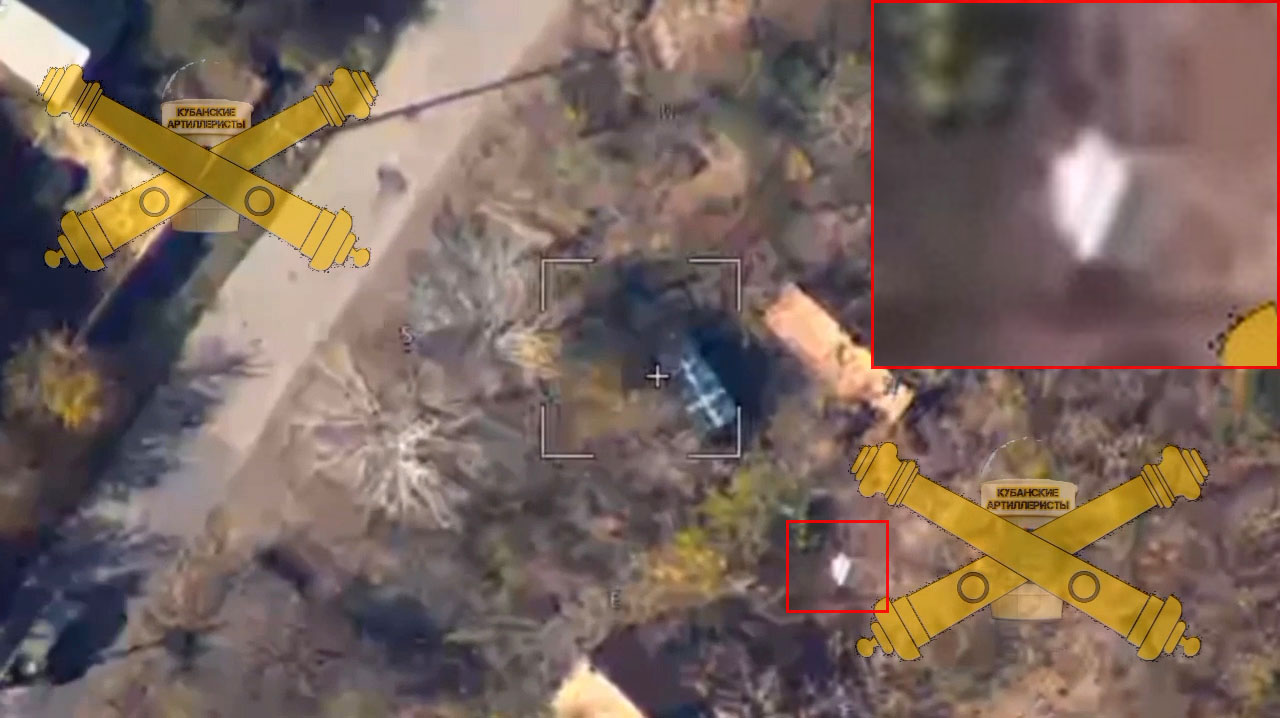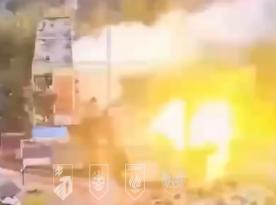The news about russian forces allegedly having used their new type of loitering munition, the Izdeliye-53 (Product-53), on the frontline against the Armed Forces of Ukraine. This information was initially shared by ISW but in fact, the origin is the community of russian military bloggers and is based upon an assumption.
Defense Express earlier provided general information about the weapon, now let's take a closer look at the episode which caused this outbreak in the media. In fact, there are important details.
Read more: Russian Forces Utitlize New Izdeliye-53 Drone, Another Upgraded Version of the Lancet UAV
The reason was the video of a drone attack on an object identified by the russian author as an RM-70 rocket launcher of the Ukrainian Defense Forces. The events unfolded on October 18th near Toretsk, roughly 9 km from the frontline in the Ukrainian rear.
A Lancet munition is deployed while controlled by an operator, and a reconnaissance drone is watching it from above. The target is held within a square crosshair until an inscription "target locked" appears. The square keeps stuck on the target all the way until the strike.

The author claims that this must have been the Izdeliye-53 from ZALA (part of the Kalashnikov group) but it is unlikely to be true. For a reminder, the new type of drone was revealed in July 2023, in the infamous TV report about the Lancet production facility.
The product shown in that video was the one with folding wings and it could be launched right from the container, the specifications mentioned a "automated search and identification of targets." The combat range of such drones and warhead size are generally lower than that of conventional fixed-winged ones because of worse aerodynamics.

Even with the footage quality as bad as it is, we can see two X-shaped wings of the same length, as in an ordinary Lancet.

However, this in fact might have more significant consequences than an occasional deployment of some newly-developed weapon. Implementing automated guidance in Lancet has in fact more impact because this drone has already entered mass production. Acquiring new capabilities could have been done by the means of software updates alone, without additional hardware that could affect production rates.
Although worth noting that what the russians call "artificial intelligence" and "automated target search" is nothing but a visual tracking technology. It does use some "machine learning" elements but is far from being the drone's autonomous work.
The idea is that the flight course toward the target is being calculated on the operator's computer based on the visual data from the drone's camera and then transmitted back to the drone. In other words, the aerial vehicle still fully relies on commands, and steady connection is crucial.
Other similar videos with the Lancet application raise doubts that the operator had to manually adjust the crosshairs positioning on the target or control the flight manually. It means that this automated lock-on system has really been introduced just recently. It can improve the accuracy of Lancets which is noteworthy but not as significant as russian military bloggers are trying it to present.
Read more: The russian Occupiers Have Started Mounting "Mangals" Even on the BMPT Terminator














